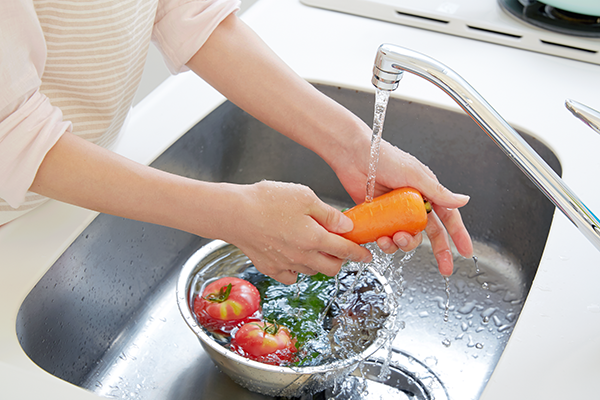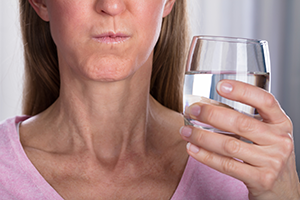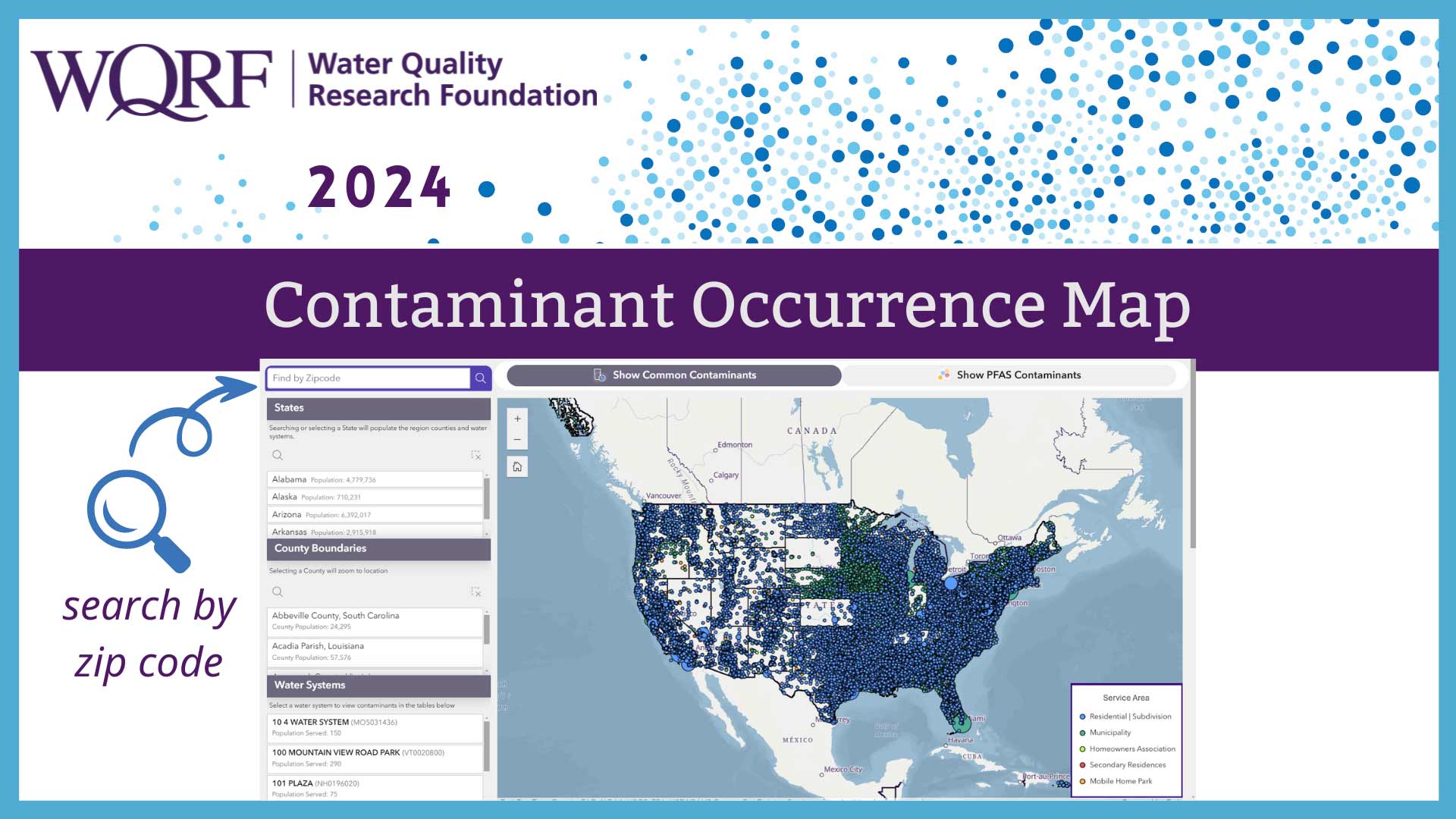The New WQRF Contaminant Occurrence Map now offers the ability to drill down and get localized with contaminant occurrence in water through a search by ZIP code, state, county, or a specific water system.
Our mapping tool contains contaminants found in public water systems from 2019-2023 and are a small subset of the entire WQRF database, which contains:
- 131+ Million Points of data
- Information on 183 different contaminants
- From all 50 states
The new Contaminant Mapping tool offers a look at 16 commons contaminants as well as the six newly regulated PFAS contaminants. Users also have the ability to ‘toggle’ on data from the USGS PFAS reconnaissance project.
Reports

Regulated Contaminants
with MCLG lower than MCL
Full Report
Included in this report:
lead, arsenic, disinfection byproducts (individual species and totals), inorganics, organics (SOC’s and VOC’s), microbials and radionuclides

Aesthetic Contaminants
Included in this report:
chlorine residual, chloramine residual, hardness, iron, manganese and pH
Key Terms
The level of a contaminant in drinking water below which there is known or expected risk to health. MCLGs allow for a margin of safety and are non-enforceable public health goals.
The highest level of a contaminant that is allowed in drinking water. MCLs are set as close to MCLGs as feasible using the best available treatment technology and taking cost into consideration. MCLs are enforceable standards.
The level of a drinking water disinfectant below which there is no known or expected risk to health. MRDLGs do not reflect the benefits of the use of disinfectants to control microbial contaminants.
This supplies water to the same population year-round. It serves at least 25 people at their primary residences or at least 15 residences that are primary residences (for example, municipalities, mobile home park, sub-divisions).
– These provide water to 25 or more people for at least 60 days/year, but not to the same people and not on a regular basis (for example, gas stations, campgrounds).
These regularly supply water to at least 25 of the same people at least six months per year, but not year-round (for example, schools, factories, office buildings, and hospitals which have their own water systems).
A required process intended to reduce the level of a contaminant in drinking water.
- Lead and copper are regulated by a treatment technique that requires systems to control the corrosiveness of their water. If more than 10% of tap water samples exceed the action level, water systems must take additional steps. For copper, the action level is 1.3 mg/L, and for lead is 0.015 mg/L.
The highest level of a disinfectant allowed in drinking water. There is convincing evidence that addition of a disinfectant is necessary for control of microbial contaminants.
This means the concentration was lower than the analytical instrument’s detection limit and are treated as a result of zero.

